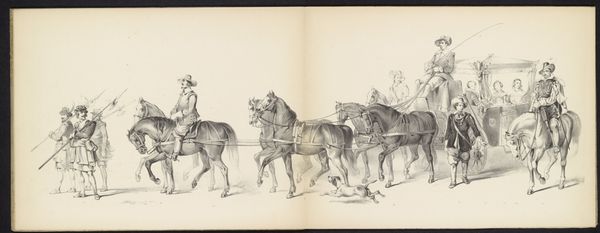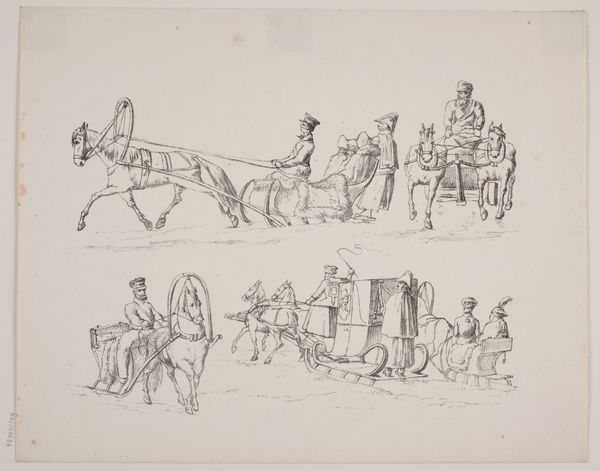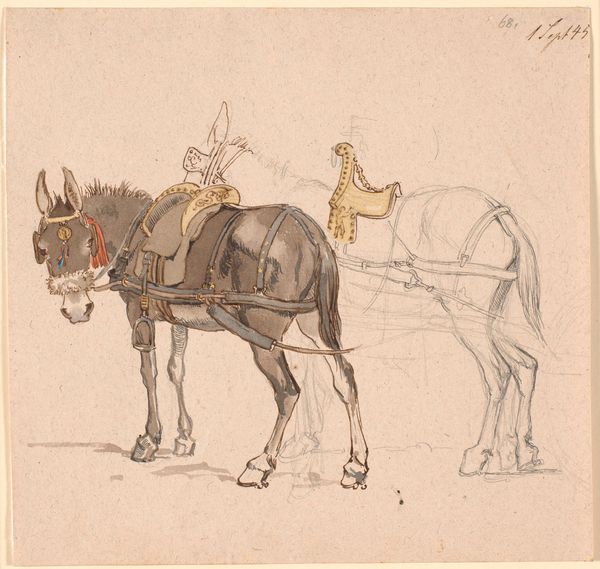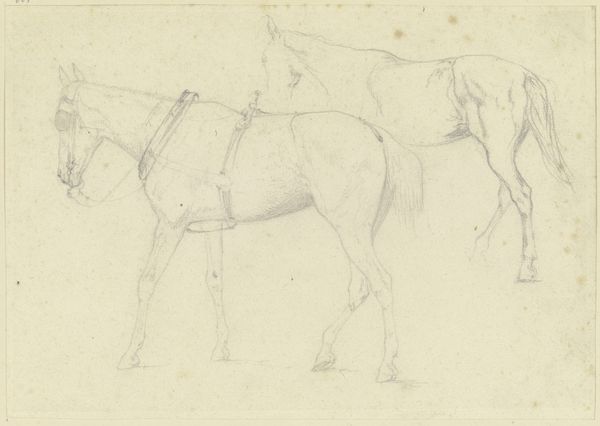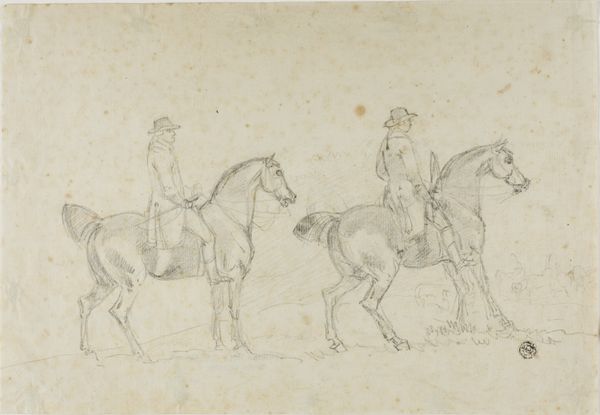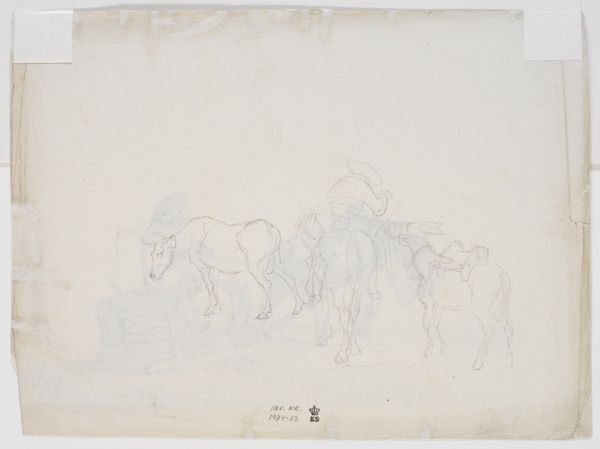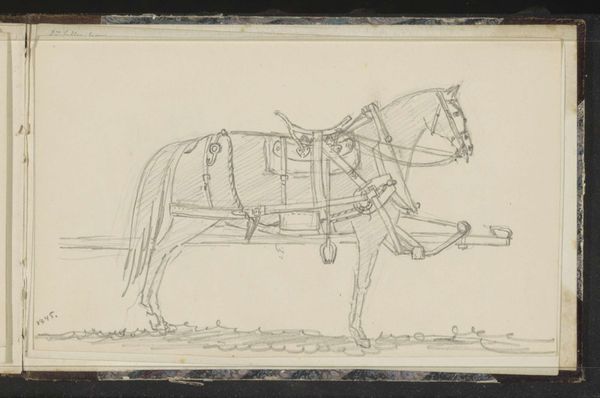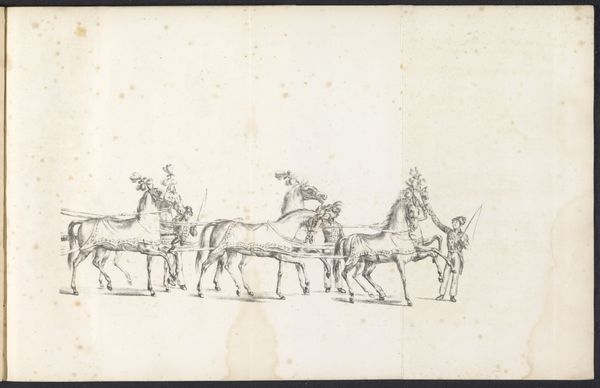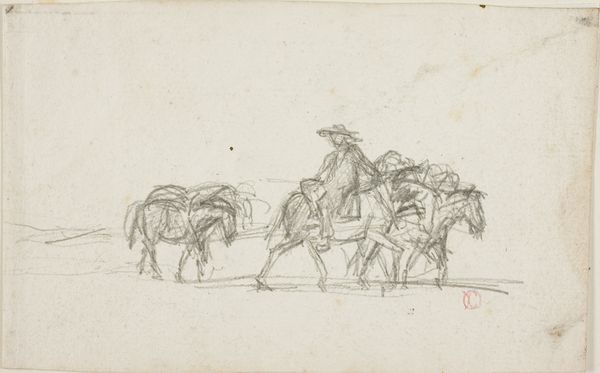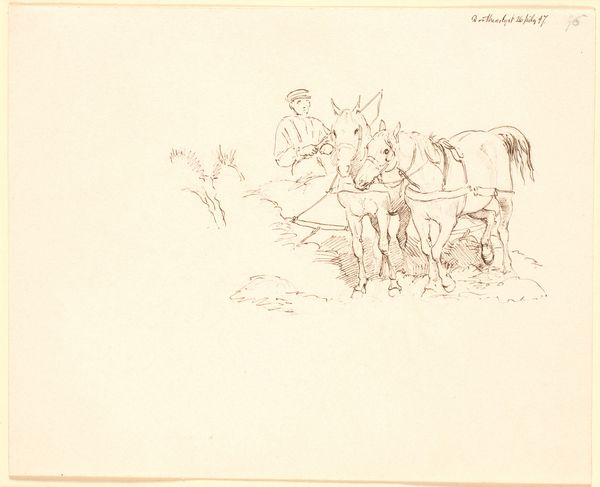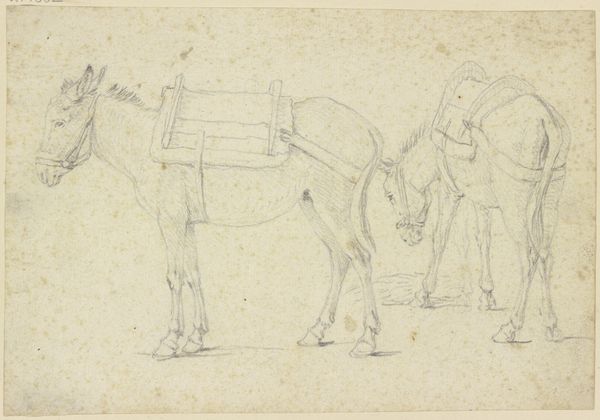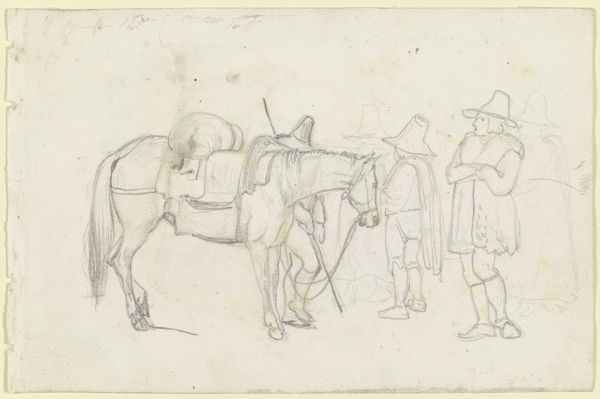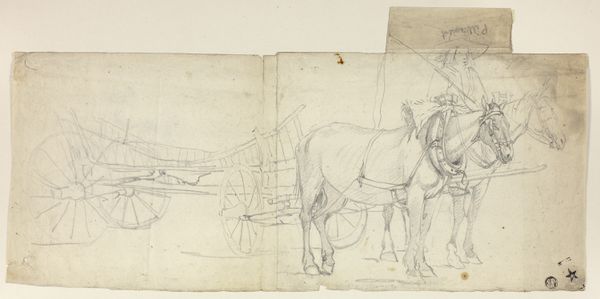
Studies of Four Horses with Two Horsemen 1848 - 1851
0:00
0:00
drawing, watercolor, pencil
#
portrait
#
drawing
#
pencil sketch
#
landscape
#
watercolor
#
romanticism
#
pencil
#
horse
#
men
#
genre-painting
Dimensions: sheet: 6 7/8 x 9 13/16 in. (17.5 x 25 cm)
Copyright: Public Domain
Curator: Before us, we have Jorgen Valentin Sonne’s “Studies of Four Horses with Two Horsemen," created between 1848 and 1851, a pencil and watercolor work now residing at the Metropolitan Museum of Art. Editor: It feels incredibly ephemeral. Almost as though it might fade away entirely if we look at it too intently. The lightness of the pencil work contrasted with those pops of colour gives the piece an unfinished quality that I find intriguing. Curator: The context of the mid-19th century is crucial here. Sonne was deeply engaged in the artistic and political currents of Denmark, where art played a vital role in shaping national identity, particularly during periods of conflict and social change. The portrayal of military figures, even in sketch form, spoke volumes about societal values and aspirations. Editor: Structurally, the repetition of the horse and rider motif is interesting, especially how it creates a sense of movement. The overlay of form gives a nod to linear perspective but stops short. I notice too how Sonne uses only light touches of watercolour paint. Curator: Precisely. While seemingly a simple study, this piece hints at the broader martial themes pervasive in Sonne’s oeuvre, often glorifying military service and contributing to the construction of a heroic national narrative. Think of it in contrast to the revolutionary spirit sweeping Europe; Denmark was solidifying its own sense of self. Editor: But even so, consider how much the transparency dictates the viewing experience. Sonne layers washes of color selectively; these function as accents, guiding your eye to certain focal points and thus, reinforcing the overall composition. Curator: His position as a painter associated with the Danish Golden Age placed him in a unique position to comment on national identity. His work resonated with the public through its representation of idealized, and often militarized, scenes. Editor: The use of negative space is brilliant; Sonne understands that sometimes what isn’t there is as important as what is. This artistic restraint strengthens the sense of delicacy that speaks so clearly across time. Curator: Sonne was definitely an artist reflecting, and also shaping, the mindset of his time. These seemingly simple drawings often tell larger stories. Editor: And yet, the restrained application of colour, together with this rhythmic repetition, suggests much more about form and flow, capturing motion and transience simultaneously. Curator: I leave with a sense of the cultural shaping forces from which these characters emerged. Editor: For me, the artistry hinges on the restraint, making a profound impact through an almost whisper of detail.
Comments
No comments
Be the first to comment and join the conversation on the ultimate creative platform.
